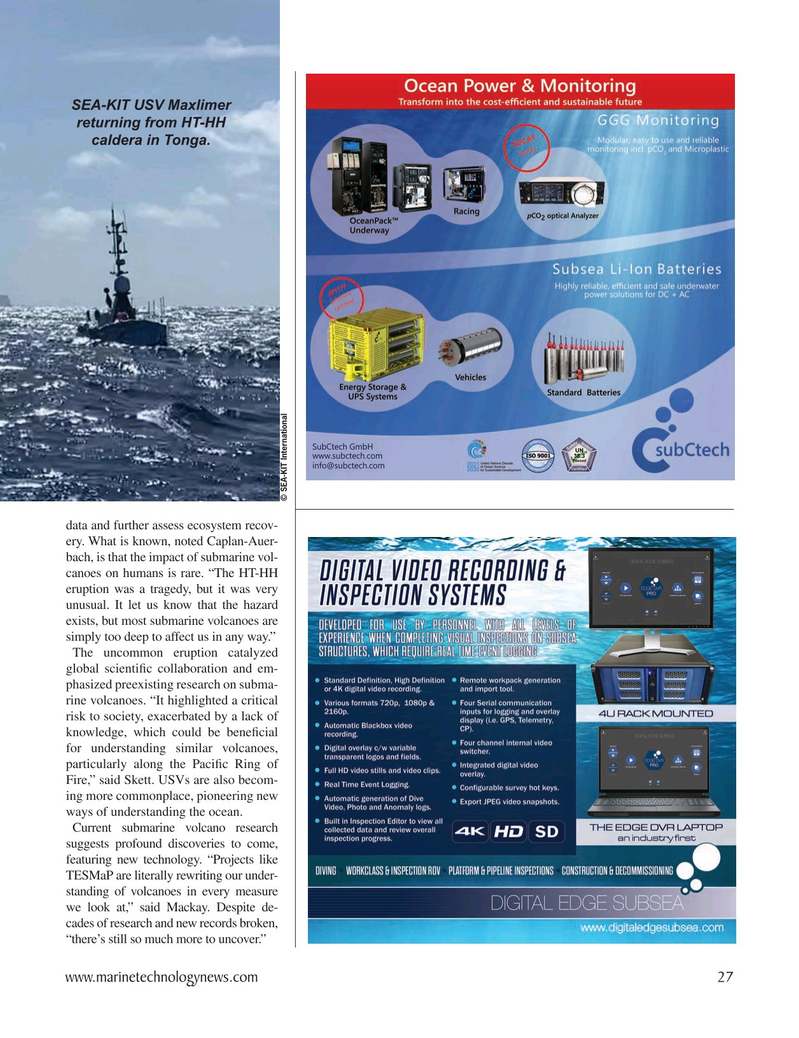
Page 27: of Marine Technology Magazine (March 2024)
Read this page in Pdf, Flash or Html5 edition of March 2024 Marine Technology Magazine
SEA-KIT USV Maxlimer returning from HT-HH caldera in Tonga. © SEA-KIT International data and further assess ecosystem recov- ery. What is known, noted Caplan-Auer- bach, is that the impact of submarine vol- canoes on humans is rare. “The HT-HH eruption was a tragedy, but it was very unusual. It let us know that the hazard exists, but most submarine volcanoes are simply too deep to affect us in any way.”
The uncommon eruption catalyzed global scienti? c collaboration and em- phasized preexisting research on subma- rine volcanoes. “It highlighted a critical risk to society, exacerbated by a lack of knowledge, which could be bene? cial for understanding similar volcanoes, particularly along the Paci? c Ring of
Fire,” said Skett. USVs are also becom- ing more commonplace, pioneering new ways of understanding the ocean.
Current submarine volcano research suggests profound discoveries to come, featuring new technology. “Projects like
TESMaP are literally rewriting our under- standing of volcanoes in every measure we look at,” said Mackay. Despite de- cades of research and new records broken, “there’s still so much more to uncover.” www.marinetechnologynews.com 27
MTR #3 (18-33).indd 27 4/4/2024 10:23:29 AM

 26
26

 28
28
